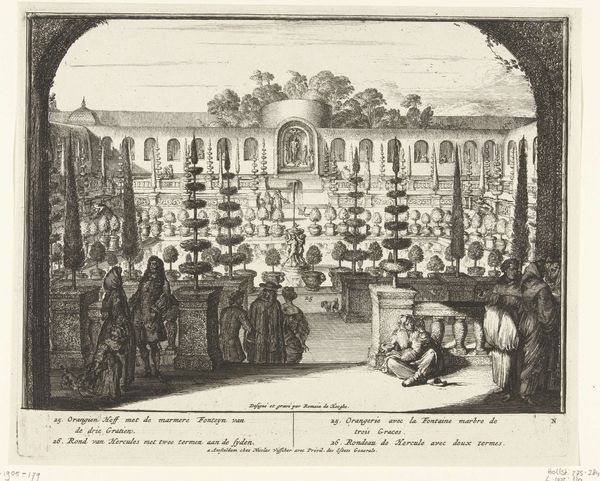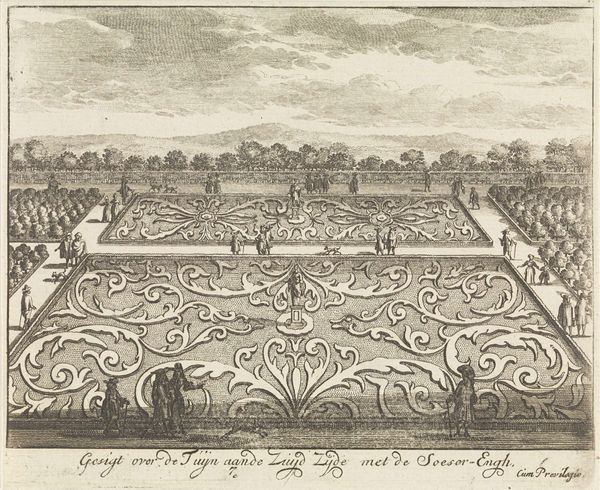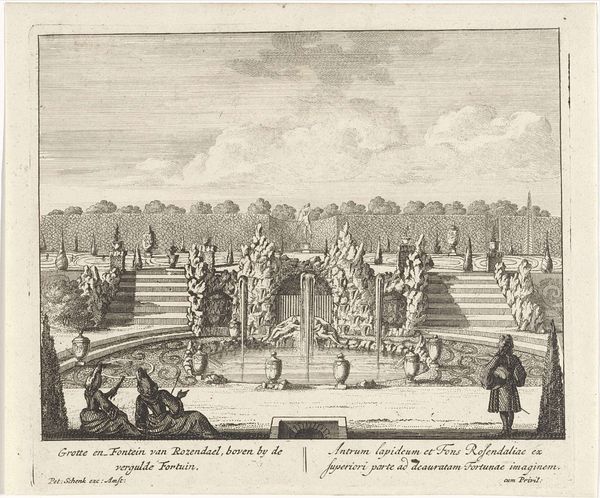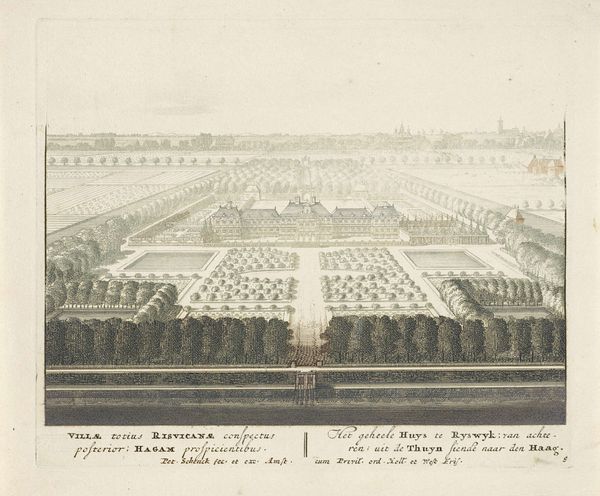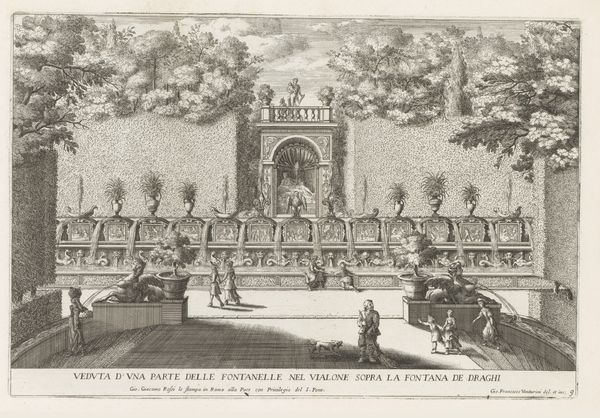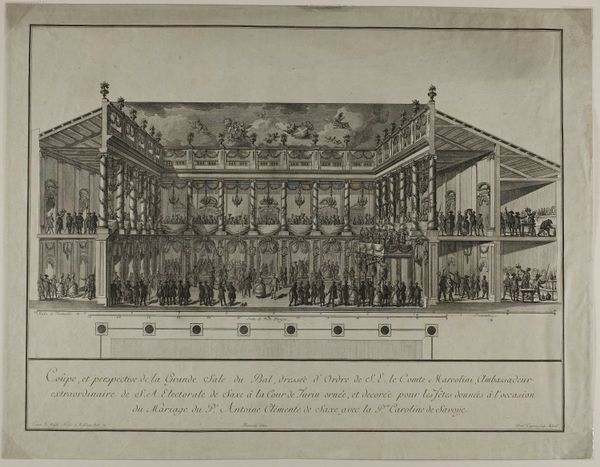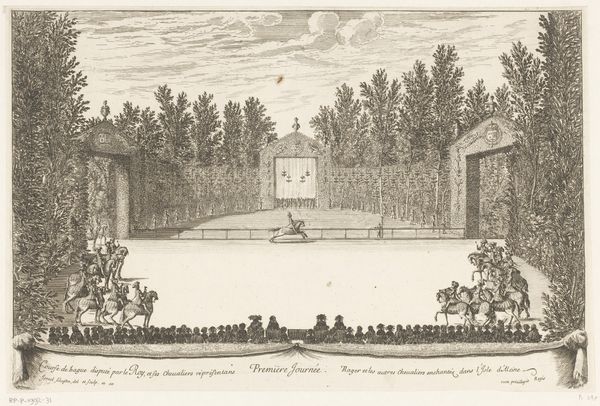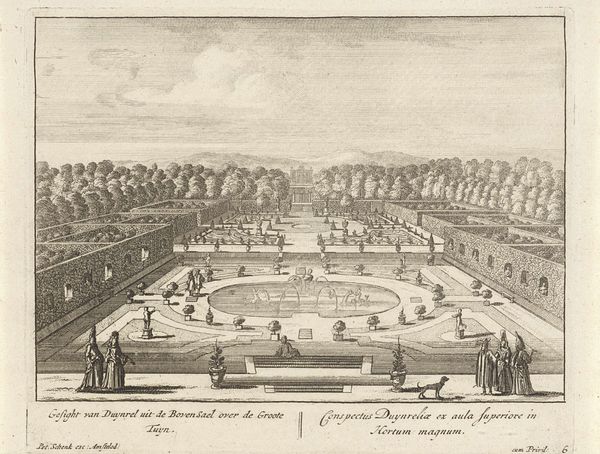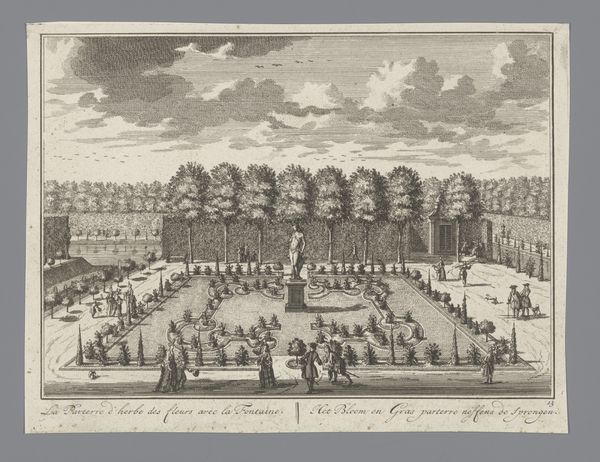
print, engraving
#
baroque
# print
#
landscape
#
perspective
#
cityscape
#
engraving
Dimensions: height 167 mm, width 203 mm
Copyright: Rijks Museum: Open Domain
Curator: This print, titled "Tuin van Kasteel Rosendael, gezien vanuit de grote zaal," depicts the garden of Rosendael Castle. The piece, created sometime between 1675 and 1711, is attributed to an anonymous artist. It's an engraving, showcasing a structured landscape in considerable detail. Editor: My first impression is one of cool distance, literally. The garden recedes in sharply defined planes, a series of ordered spaces. The graphic nature of the engraving emphasizes linearity and precision above all else. Curator: The composition underscores the formal approach of garden design at the time. Note how perspective and symmetry converge, asserting control over nature and also echoing the absolute monarchies prominent throughout Europe in the 17th century. Rosendael Castle, including its garden design, functioned as a stage for aristocratic display. Editor: Yes, that rigid structuring also creates visual depth using repetitive forms to lure the eye deeper into space. See the patterns in the landscaping repeated, the vases mirroring each other like musical variations. It all amplifies that formal aesthetic, and as you said, communicates wealth and power. Curator: The presence of Rosendael, originally medieval in foundation, demonstrates a commitment of transforming an outdated space into something representative of modernity. And gardens, especially formalized Baroque landscapes like this, spoke to that aspiration. The elites wanted to assert not just their power but their cultivation of taste through their properties. Editor: It's fascinating how the artist utilized linear precision through etching, in a nearly scientific fashion, creating the feeling of expansive depth, transforming paper to architecture. The swans too add a dynamic dimension to a static scene. Curator: That dynamic really brings the space to life, which again underscores the performative nature of elite living at that time. To view a landscape from your residence was not merely about having the space but curating what viewers thought as they interacted with that space. Editor: Thank you; viewing it with historical context enhances my understanding of the social functions embedded within this landscape, an appreciation that goes beyond its sheer visual components. Curator: Absolutely; the piece reveals a lot when you contextualize the work through that sociopolitical landscape.
Comments
No comments
Be the first to comment and join the conversation on the ultimate creative platform.
